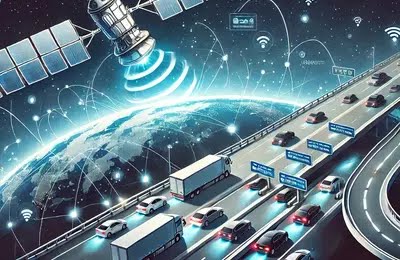Union Minister Nitin Gadkari announced in a written reply in the Rajya Sabha on Wednesday that the government is testing a new toll collection system using the Global Navigation Satellite System (GNSS) on two national highways.
The pilot study includes the Bengaluru-Mysore National Highway (NH-275) in Karnataka and the Panipat-Hisar National Highway (NH-709) in Haryana. Initially, the GNSS-based Electronic Toll Collection (ETC) system will be implemented alongside the existing FASTag system. This hybrid model combines RFID-based ETC and GNSS-based ETC.
Dedicated GNSS lanes will be introduced at toll plazas, allowing vehicles with GNSS-based ETC to pass through seamlessly. Eventually, all lanes will be converted to GNSS. This new method charges road users based on the distance travelled rather than fixed toll locations, aiming to provide hassle-free tolling, reduce leakages, and minimise toll evasion.
An international workshop for stakeholder consultation was held on 25 June 2024. A Global Expression of Interest (EOI) was invited on 7 June 2024, to facilitate wider industrial consultation. This new system aims to enhance the efficiency and user experience of toll collection on national highways in India.
How it differs from FASTag
The GNSS-based toll collection system operates on the Global Navigation Satellite System (GNSS), offering precise location tracking capabilities. Using technologies such as the Global Positioning System (GPS) and India’s GPS Aided GEO Augmented Navigation (GAGAN), this system ensures accurate distance-based toll calculations.
Vehicles equipped with an on-board unit (OBU) or tracking device will be charged based on the distance travelled on highways. Digital image processing will record coordinates along national highways, enabling software algorithms to determine toll rates accordingly. Gantries with CCTV cameras will monitor compliance and enforcement measures, ensuring seamless operation.
Payments will be deducted from a digital wallet linked to the OBU, streamlining the toll payment process. The government has initiated pilot projects on selected sections of National Highways to test the efficacy of this GNSS-based electronic toll collection (ETC) system. Initially introduced alongside FASTag, this system promises to complement existing tolling technologies while offering added convenience for commuters.
Significantly, the National Highway Authority of India (NHAI) presently gathers approximately Rs 40,000 crore in toll revenue. This figure is projected to increase to Rs 1.40 trillion within the next 2-3 years.



